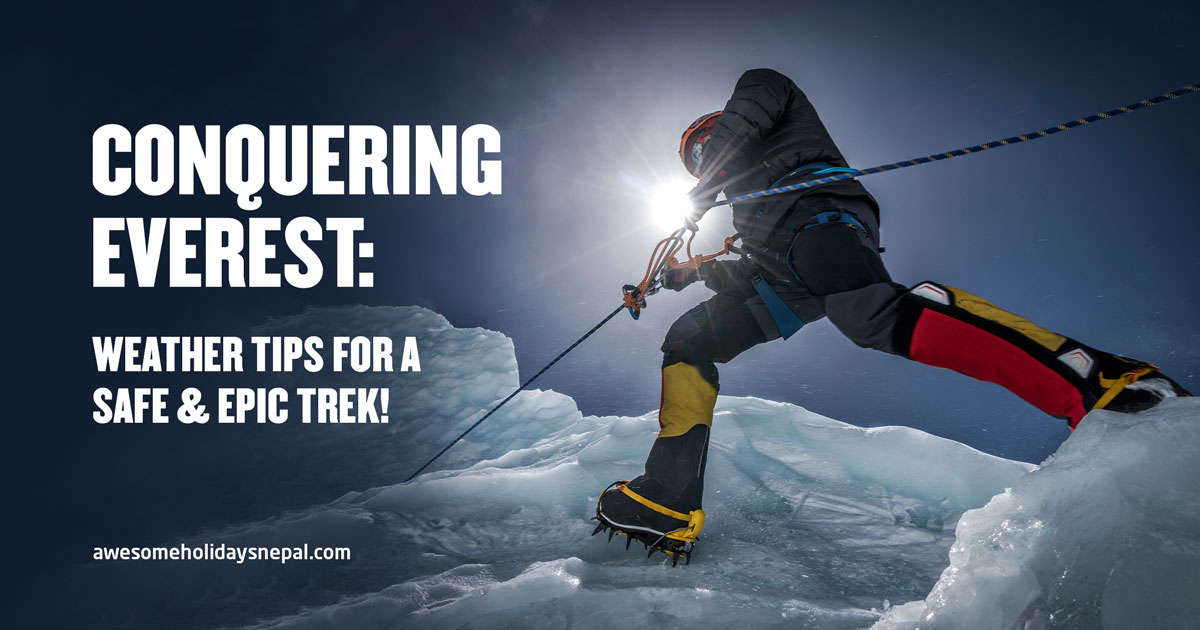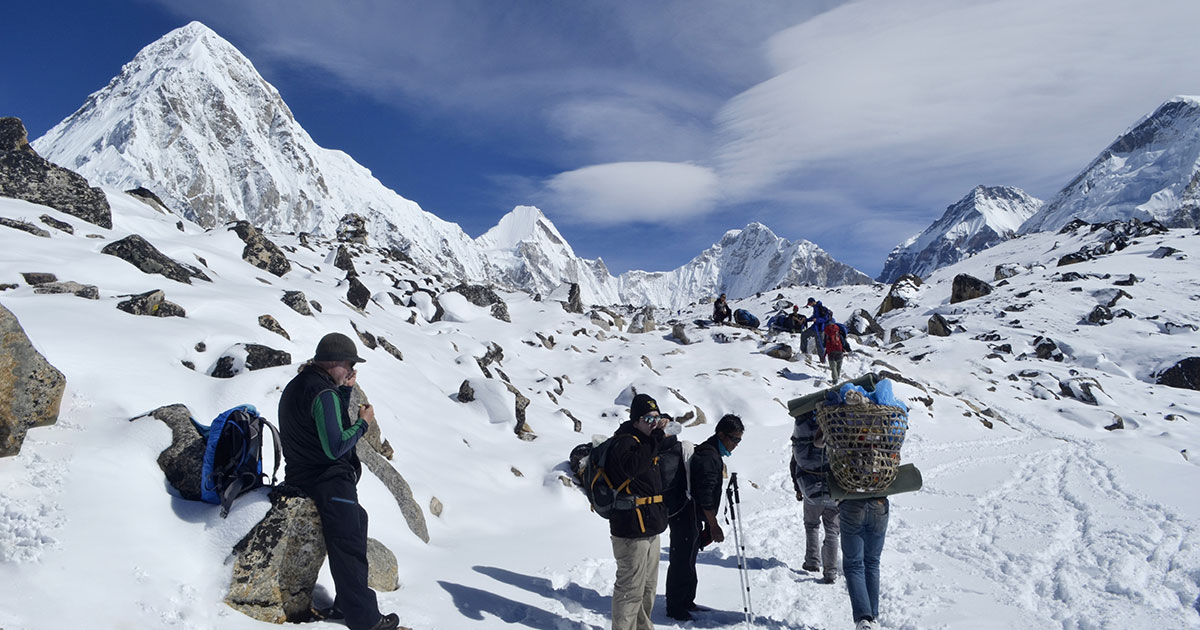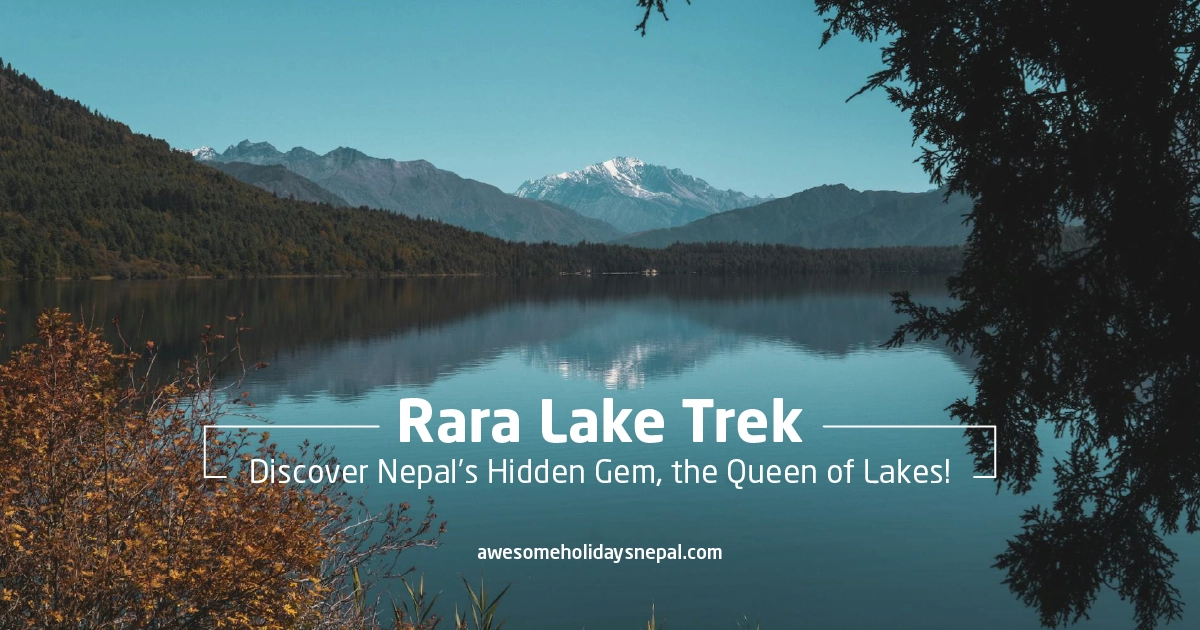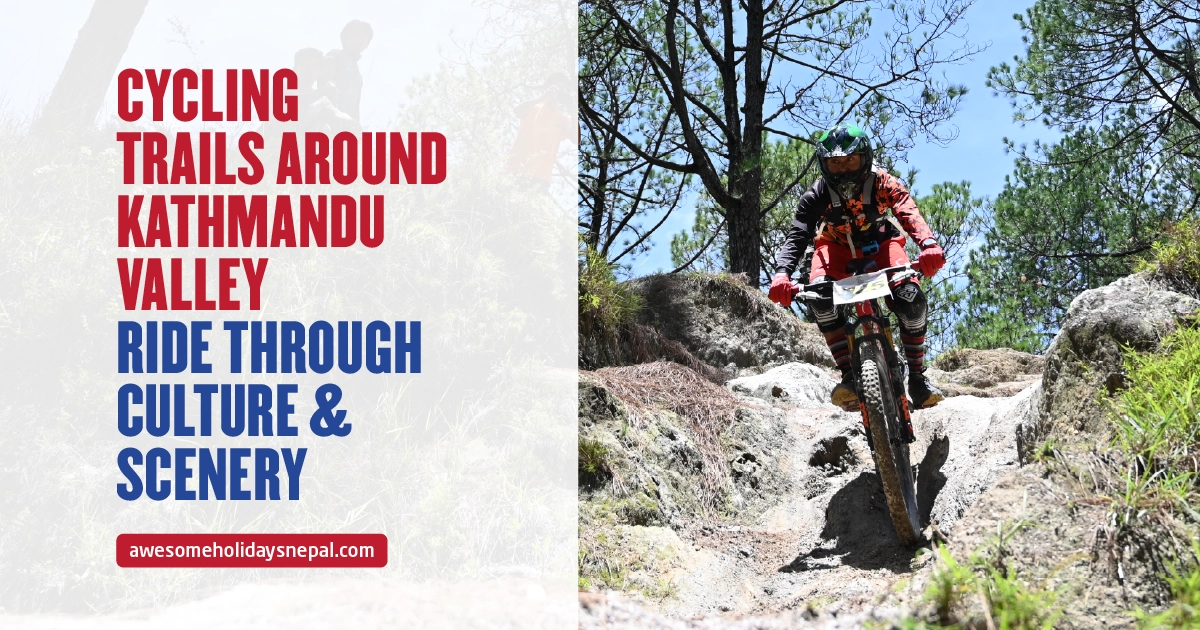Everest Region Weather: A Comprehensive Guide

Home to Mount Everest, the world’s highest mountain (8,848 meters), the Everest Region has varied and occasionally erratic weather patterns. Thanks to its high elevation and rough terrain, the environment changes notably throughout the year and affects trekking experiences, safety, and preparation requirements.
Anyone intending to visit Everest Base Camp (EBC) or other trekking trails in the area must first appreciate the weather conditions in the Everest region.
Everest Region Weather
Winter in the Everest Region (December – February)
Freezing temperatures, significant snowfall at higher elevations, and more hikers on the trails define the winter in the Everest area. Even in foul weather, winter still provides beautiful mountain vistas and clear skies.

December: The Onset of Deep Winter
Daytime temperatures at Everest Base Camp range from -20°C to -5°C as winter approaches, whereas nighttime temperatures can drop to -25°C (-13°F). Snow falls regularly coats trails and complicates hiking. Still, the clean skies and fresh air offer among the greatest vistas of Everest and the adjacent peaks. Quieter than roads, trails offer maximum solitude and adventure for people in fairly challenging situations.
January: The Coldest Month
January is indeed the height of winter and some of the year’s lowest temperatures. Daytime temperatures could average around 6°C (42.8°F) at lower altitudes, but nighttime temperatures could fall to -25°C (-13°F) or lower at Everest Base Camp. Snow is normal and high up trails could be made impassable due to deep snow. Still the air is sharp, though, so one can see the great Himalayas. Trekkers need to be well-equipped with the right winter gear to face the frigid conditions.
February: The End of Winter
By mid-February, daytime temperatures at lower altitudes have touched around 10 degrees Celsius (50 degrees Fahrenheit). Still, daytime temperatures stay below freezing at Everest Base Camp, and at night they can still fall to -15°C (5°F). Snow keeps falling but dwindles in intensity toward the close of the month. Trekkers can find beautiful winter sights and uncrowded trails as long as they have the proper cold-weather equipment.
Winter in the Everest region is characterized by freezing temperatures, heavy snowfall at higher altitudes, and fewer trekkers on the trails. Despite the harsh weather, winter also offers clear skies and stunning mountain views.
Spring in the Everest Region (March – May)
Spring is among top times to travel the Everest region because it has clear skies, mild temperatures, and stable weather. At lower elevations, the landscape bursts with flowering rhododendrons, hence it is a great moment for trekking and photography.
March: The Beginning of Spring
March marks the transition from winter to spring, with daytime temperatures at Everest Base Camp ranging from -15°C (5°F) to 10°C (50°F). Nighttime temperatures can still be cold, dropping to -12°C (10.4°F). Snowfall is still possible, but the days become progressively warmer. The trails are less crowded, providing a peaceful trekking experience.
April: Peak of the Trekking Season
Among the Everest region’s favorite trekking months is April. Daytime temperatures fluctuate from -10°C (14°F) to 15°C (59°F), so the weather is normally stable. The absence of clouds provides superb sights of the mountains.

Blooming rhododendrons and other mountain flowers give the hiking trails lively colors. For hikers seeking good clearness and reasonable temperatures, this month is perfect. If you want to know why the Everest Base Camp Trek in April is ideal? do read our blog.
May: The End of Spring
May marks the beginning of monsoon season and the end of spring. Everest Base Camp has daytime temperatures varying from -5°C (23°F) to 20°C (68°F), with nighttime temperatures fluctuating around -10°C (14°F). The mornings are generally clear, but in the early afternoon clouds might start to develop. Most mountaineering trips are summit bids; therefore, the number of trekkers drops. By the end of May, both snow and rain become more likely.
Towards the end of May, the chance of snow and rain increases.
Summer/Monsoon in the Everest Region (June – August)
Nepal’s summer corresponds with the monsoon season, when lower elevations see much precipitation and higher altitudes experience overcast weather.

Though the Everest Base Camp itself doesn’t get much rain, lower trails might be damp and liable to landslides.
June: The Beginning of the Monsoon
Daytime temperatures at Everest Base Camp usually range from 10°C (50°F) to 20°C (68°F) and nighttime temperatures hover around -8°C (17.6°F). Although the monsoon advances early June could still be ideal for trekking; heavy rains, slick paths, and low visibility become more frequent. hikers need waterproof apparel and flexible schedules.
July: Peak of the Monsoon
Everest Base Camp has daytime temperatures ranging 10°C (50°F) to 25°C (77°F) during July, which is the wettest month. Nightly temperatures are about -8 degrees Celsius (17.8 degrees Fahrenheit). Muddy, slick paths; leeches in lower areas; and more landslides all result from heavy precipitation. Mountains are often covered by clouds, so visibility is usually less than ideal. Still, those looking for seclusion have empty tracks to make use of.
August: The End of the Monsoon
With less moisture and better weather, August is a transition month. At Everest Base Camp, daytime temperatures vary from 10°C (50°F) to 20°C (68°F), while nighttime temperatures are approximately -7°C (19°F). The gorgeous Himalayan vistas are made even more marvelous by the rich flora and intermittent clear days. Trekkers should nevertheless be ready for muddy trails and intermittent rain.
Autumn in the Everest Region (September – November)
Another popular climbing season in the Everest area, autumn has dry weather, clear skies, and steady conditions.

The monsoon reveals clean mountains, fresh air, and clear vision by washing away dust and dirt.
September: The Start of Autumn
Daytime temperatures at Everest Base Camp range from 10°C (50°F) to 15°C (59°F), with nighttime temperatures between -1°C (30.2°F) to -5°C (23°F), September signaling the end of the monsoon season. The skies start to clear, and people enjoy the tracks even more. With stunning scenery and moderate temperatures, this is an excellent time for trekking.
October: Peak Trekking Season
Trekking in the Everest area is most common in October. At Everest Base Camp, daytime temperatures vary from -12°C (10°F) to 12°C (54°F), whereas evening temperatures drop to -10°C (14°F) to -6°C (21.2°F). The clear skies and great visibility of presently stable weather offer ideal conditions for long views of Everest and the nearby peaks. Trails and teahouses, however, can be busy, so advanced reservations are suggested.
November: Transition to Winter
Colder temperatures come in November, indicating that winter is around. At Everest Base Camp, daytime temperatures range from 10°C (50°F) to -15°C (5°F), with night temperatures falling to -10°C (14°F) to -20°C (-4°F). Though temperatures drop toward the end of the month, the clear sky offers great views; however, hikers will need warm apparel. The trails are less crowded which decreases the noise level for hiking.
Be Prepared for Unpredictable Everest Region Weather
Just like the peaks themselves, the weather in the Everest region is magnificent and capricious. From the frigid cold of winter to the clear crisp days of fall and spring and the monsoon’s rich, foggy scenery, every season provides a different trek. Knowledge of these seasonal changes is absolutely vital for organizing a fun and secure trek to Everest Base Camp.
The Everest region offers unique trekking experiences in each season.
So, you need to be prepared with layered clothing, and anything that the unpredictable weather may throw at you. Flexibility is key to making the most of our incredible Himalayan adventure. We hope this comprehensive guide of Everest Region Weather will be very helpful for all of you.
FAQs
Expand AllWhen is the best time to trek to the Everest Region?
The best time to trek to the Everest region is during the Autumn and Spring seasons, as the climate is favorable and the trekking route is rich in luscious greens. For a safe, memorable, and awesome experience, plan a trek between mid-September and November or March and June.
However, the trek is possible all around the year. As long as you can avoid rainstorms and sustain extreme temperatures, you can ascend during colder months to avoid the crowd.
Do I need travel insurance for the Everest region?
Yes, you would need trekking insurance to the Everest base camp. As the base camp is situated at an altitude of over 5000 meters, there is always a risk of natural disasters like glacial flooding, avalanches, and landslides.
Besides, the lower temperature and scarce oxygen at higher elevations often cause altitude sickness, frostbites, and other medical emergencies. Having trekking insurance helps a lot in such scenarios.
What permits are required?
You will require two passes, the Sagarmatha National Park Entry Permit and the Khumbu Pasang Lhamu Municipality Entry Permit to trek through the Everest region. Apart from these, you can get the optional Gaurishankar Conservation Area permit if you hike from Jiro to Everest.
These passes can be obtained easily from the Tourism Board of Nepal or from the Lukla or Monjo check post if you are already in Lukla.
How cold does it get at Everest Base Camp?
The temperatures vary by seasons in Everest Base Camp. Daytime temperatures in summer (June to August) can rise to 10°C to 20°C (50°F to 68°F), and in winter (December to February) they might plummet as low as -25°C (-13°F) at night. Night temperatures could be frigid even in the spring and fall.
How unpredictable is the weather in the Everest region?
The weather in Everest Region is highly unpredictable as it has high altitude and exposure.
Can I trek in Everest during the rainy season?
Yeah, but it is not recommended for most trekkers.
What should I do if I experience altitude sickness?
Stop immediately when you feel sick due to altitude and rest for a while. Hydrate yourself and take medications to ease the pain.
You should never try to ascend or descend right away whenever you are experiencing altitude sickness. Let your trekking guide know about your situation and request an emergency rescue if the condition worsens.
What kind of fitness level is required?
To trek to the Everest region, you will require a moderate fitness level since you will walk at least 6-7 hours a day. You will also require good cardiovascular endurance and muscular strength to ascend easily through rough terrain.
If you aren’t somebody who doesn’t perform physical training regularly, it is better to start training at least ¾ months in advance. Ensure you include cardio, flexibility exercises, and strength training in your workout to prepare your body for the trek. However, for a Heli-sightseeing tour, you do not need any such fitness requirement.
Related blog posts
Discover a choice of tourist destinations loved by most of our visitors. Whether you're on a jungle safari to spot rare animals or walking through a world heritage site, these well-planned itineraries cover the major highlights of Nepal.




